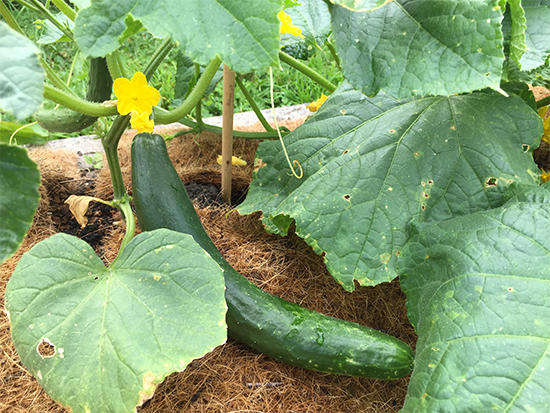Happy New Year to you all! Hope the year has started well.
It would be fair to say it’s typical for gardeners to complain about the weather. It’s either too wet, too cold or too hot. This year complaining about the weather being too hot however feels justified – the sun seems to be really intense! Early morning and late evening is definitely the best time to be in the garden.
We planted some of the beet family, beetroot and perpetual spinach, in this bed a few weeks ago and many of the seedlings fried in the heat of the day.

We’re planting replacement seedlings in between the plants that survived but the difference is that this time we’ll give them some shade until they’re big enough.

We use a cloth that’s 50% shade. Depending on your conditions, you can choose a shade cloth that ranges anywhere from 20-75%. Old sheets also work well but they can get heavy when wet.

We place our shade cloth over the hoops that are covered with bird netting as well – our friendly pukekos get a kick out of pulling out the newly planted seedlings! Cover only the top of the bed though with the shade cloth as you still need lots of air movement around the plants.
We recommend you do this for all new seeds and seedlings at this time of the year, especially the salad crops of lettuce and rocket, and shade-loving herbs like coriander, dill and mint.

Other tasks this month
February is a good time to plant dwarf beans, as well as another cucumber and zucchini plant to see you through to the end of autumn, and companion flowers to feed our beneficial insects and monarch butterflies. A second planting of zinnias and cosmos will look after these creatures through till late autumn.

Finally, feeding, watering and keeping a good cover of mulch on plants are super important jobs to do this month.

Enjoy the bounty of the garden at this time of the year!
From Rob, Jan and the Team at OEG!
Website designed by www.thecornerstorecollective.com
Developed by Richard Hpa
4 Responses
hi! what are the hoops made of? I definitely need shade over my vege bed 🙂
Hi Nic We make the hoops out of 6mm reinforcing steel and cover them with hosing. Here’s the how-to video… https://organicediblegarden.co.nz/2017/02/17-february-2017/
All the best 🙂
My beans have finished producing. Is there any benefit in leaving them in the veg garden to decompose/digging them in, or should I remove them to the compost bin and thereby free up the bed for planting?
Hi Julie Beans fix nitrogen in the soil as they grow – there’s no benefit in digging them into the soil at the end of the harvest, although it will add carbon to your soil. The main reason you would leave beans in your vege garden is if you want to save the seeds, or if you live in a temperate climate, with no frosts, the plants will survive the winter and come back again next summer. But if you want to use the patch for winter veges, it would be best to remove them to the compost. 🙂